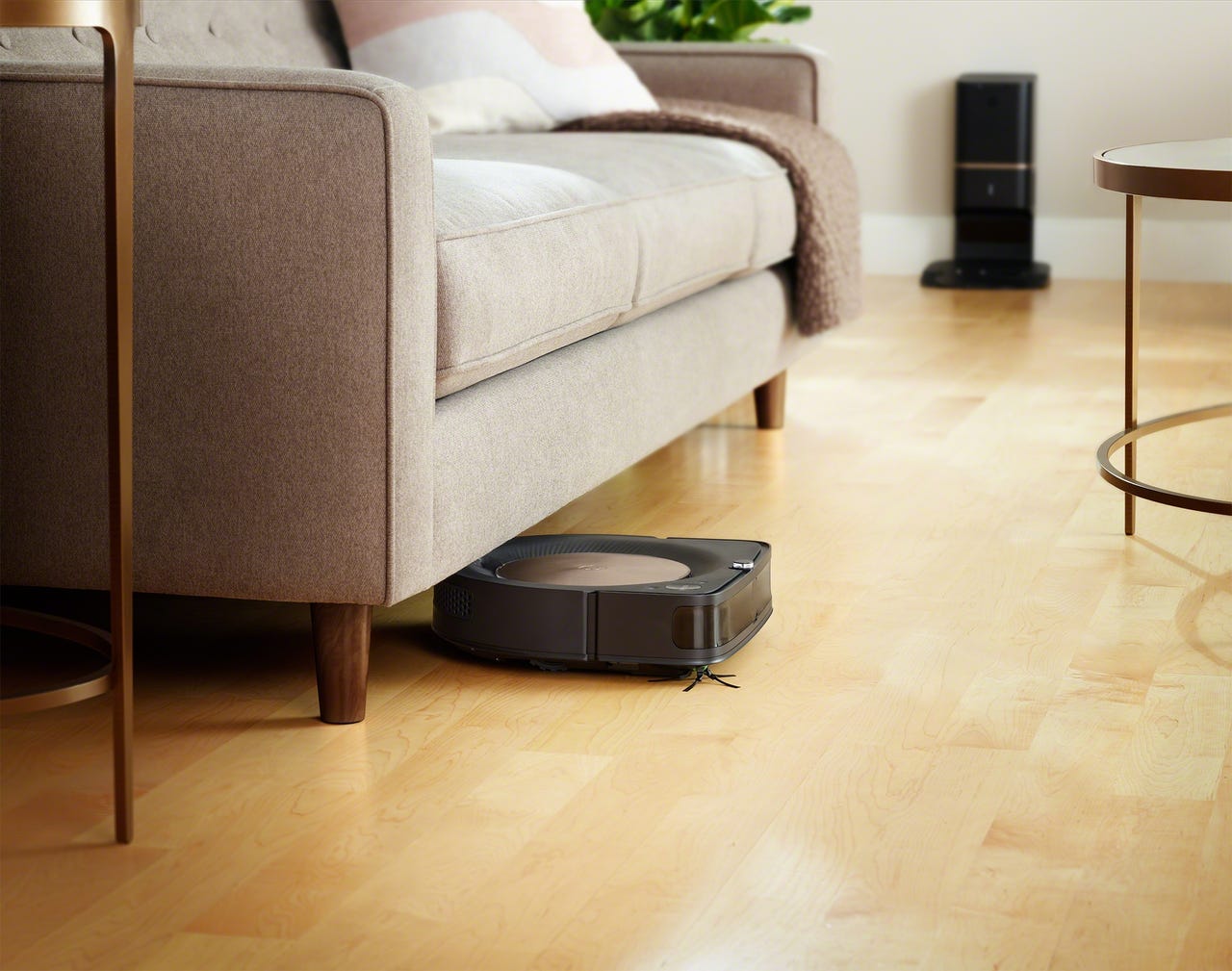'ZDNET Recommends': What exactly does it mean?
ZDNET's recommendations are based on many hours of testing, research, and comparison shopping. We gather data from the best available sources, including vendor and retailer listings as well as other relevant and independent reviews sites. And we pore over customer reviews to find out what matters to real people who already own and use the products and services we’re assessing.
When you click through from our site to a retailer and buy a product or service, we may earn affiliate commissions. This helps support our work, but does not affect what we cover or how, and it does not affect the price you pay. Neither ZDNET nor the author are compensated for these independent reviews. Indeed, we follow strict guidelines that ensure our editorial content is never influenced by advertisers.
ZDNET's editorial team writes on behalf of you, our reader. Our goal is to deliver the most accurate information and the most knowledgeable advice possible in order to help you make smarter buying decisions on tech gear and a wide array of products and services. Our editors thoroughly review and fact-check every article to ensure that our content meets the highest standards. If we have made an error or published misleading information, we will correct or clarify the article. If you see inaccuracies in our content, please report the mistake via this form.
Robot vacuums: Hands on with the Proscenic M7 Pro and iRobot Roomba s9+


The news that Amazon was buying iRobot led to a certain amount of discomfort about whether the cloud giant would now have a map of your home as well as cameras tracking who walks up to your front door. But practically speaking, how useful are the maps your smart cleaner makes to you or anyone else -- and how smart are they?
We've been testing the Proscenic M7 Pro and iRobot Roomba s9+ with Apple's HomeKit (using Homebridge to add IoT devices that aren't directly supported), so we have two different maps of our flat created with two different mapping technologies.
ZDNET Recommends
Proscenic uses Lidar, while iRobot uses cameras to build a map designed to help the vacuums clean more efficiently and not bump into or get stuck under the furniture, as well as finding their way back to their base stations to charge.
Also: Boston Dynamics: We won't weaponize our robots and neither should our customers
This isn't exactly a spectator sport: watching a robot vacuum map or clean is an exercise in frustration because they tend to proceed by trial and error as they slowly build up the map. The results matter more than the process, though.
The Proscenic map was fairly accurate, although the combination of the M7 Pro's laser and our wooden Victorian banisters gave our hall an odd, irregular shape on the map. It also simply refused to move past a case of wine on the kitchen floor, but we were able to use the remote control in the smartphone app to drive it past and have it carry on mapping.
You could do the same when cleaning if you know there's a particularly dirty spot you want it to start with, or if it gets stuck: you can see on the map where the robot is, which is handy if it ends up trapped under the sofa where you can't see it. If that keeps happening, you can mark it as a no-go area in the app (or just block it off with some cardboard!).
If you're using the map for that process, you can name the rooms in the app, which also lets you save multiple maps if your home has multiple floors (if you carry the M7 Pro upstairs to clean the bedroom, you'll have to pick the map in the app to avoid it mapping out the space again). The maps also get deleted after 3 months: that's less for privacy than to stay up to date if you've moved furniture around.
The Roomba s9+ uses a camera and sensors to do the mapping: the 3D sensor also helps it spot corners and furniture, and because the robot is shaped like a D rather than round, it can turn and clean along the edge of a wall or cupboard. The shape also makes it harder for the Roomba to turn round in narrow gaps (like between the legs of my office chair), so the maps – and the 'keep out' areas you can mark on them – help it stop getting stuck. It's still not perfect but it did seem to be more accurate than the Lidar at judging small spaces were actually big enough for it to get into rather than ignore.
There's also a 'careful' option in the app where you can tell the Roomba not to try bumping into things to see if they move out of the way: you want that option when it's when it's a dresser with your favourite vase on top. Later models of the Roomba move the camera from the top of the robot to the front: it may not get such a good view of the room overall, but it's better at spotting cables (and pet poop) on the floor and avoiding them.
The app tells you which of those things the robot has had to avoid each time it cleans and you can mark them as permanent obstacles (or go and pick them up if they're not supposed to be there). The photos are encrypted, sent only to your phone and deleted after 30 days. If you want, you can opt in to contribute these photos to the database that iRobot uses to train its machine-learning systems to better avoid things around the home. The only metadata that goes with that is how fast the robot was going and some details about the photograph, such as the exposure level. iRobot uses an algorithm to spot and delete any images that include people.
Add an assistant
The Roomba s9+ can connect to Amazon Alexa or Google Assistant but not HomeKit, but the open-source Homebridge takes care of that process. This integration is handy if you want remote control or automation without pulling up the individual smartphone app for every smart device you own. You're probably going to set a schedule for a robot vacuum and forget about it until you need to empty it (or empty the dust tower), but you can also set it to clean when you go out, using geofencing for your phone. You can save up to 10 maps and the Roomba will look around to try and work which map to use. But you can also use the digital assistant integration to turn your Roomba into a home-monitoring robot, sending it to take a photo of something for you or tell it to go clean a specific area like 'under the kitchen table' if you see there's a mess and your hands are full.
There is some work needed to get an initial connection: you'll need the Roomba's IP address (you can get this from any network-scanning tool) and then run a Python script to extract the device ID and password. These are used to configure the Homebridge plugin, which exposes the Roomba to HomeKit as a set of switches and sensors -- for example, one that triggers cleaning and another that sends the device back to its docking station. You can tie these together into a HomeKit automation, triggering a vacuuming run when you leave the house, for example.
Also: iRobot drops its first-ever combo mop and vacuum robot, the Roomba Combo j7+
Sadly there's no HomeKit integration for the Proscenic M7 Pro, nor is there a Homebridge plugin, so you can't make it part of a set of home-automation routines in the same way.
As for the cleaning, both robot vacuums are best thought of as 'little and often' rather than a deep clean. If you've tried earlier generations of robot vacuums and been disappointed, these are much more effective, especially the s9+ which had stronger suction on carpets (as it should do at nearly three times the price of the M7 Pro).
Dust, fluff and cat hair disappear fairly efficiently but there are always a few corners even the D-shape of the Roomba or the sweepers on the M7 Pro can't reach. We tested the s9+ with the optional Clean Base; a small dustbin that sucks the dirt out of the Roomba and doesn't need emptying nearly as often. That was noisy when it was extracting the dust, but extremely convenient.
The M7 Pro has an optional dust tower but we didn't test it. It also has a small water tank that you can slot in and a mopping surface you attach to the underneath so you don't have to buy a separate robot mop for hard floors that get very messy: the Roomba s9+ is available as a bundle with the Braava Jet m6 robot mop, which shares maps with the Roomba s9+ and j7 vacuums, so the s9+ can vacuum your kitchen floor and send the Braava to clean a particularly dirty spot. It also uses the maps to make sure the water it sprays on the floor doesn't end up squirting the wall or the carpet where your hard floor ends. The next Roomba model will do both vacuuming and mopping but it remains to be seen whether one system that tries to do both will beat two single-purpose robots coordinating.
In practice, both robot vacuums still get stuck, miss some dirt and get caught up in cables: but the mapping features do make them more efficient.